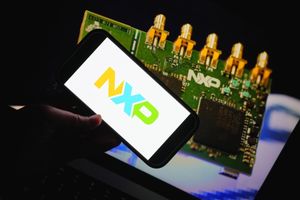
October 29, 2025 – While the "Magnificent Seven" tech behemoths have undeniably anchored the recent market surge, a deeper look reveals that the current stock market rally, extending robustly into late 2025, is being propelled by a much broader and more diversified cast of technology companies. Across various sub-sectors, from specialized semiconductors to applied AI and green technology, innovation trends and a voracious investor appetite for tech-driven opportunities are collectively contributing to an expansive upward trajectory, moving beyond the concentrated gains of a select few. This broadening participation signals a maturing yet still dynamic tech landscape, where growth opportunities are emerging in unexpected corners and disrupting traditional market narratives.
The shift in market dynamics has been palpable throughout 2025. While mega-cap technology companies like Nvidia (NASDAQ: NVDA), Microsoft (NASDAQ: MSFT), and Apple (NASDAQ: AAPL) initially led much of the gains in 2023 and the first half of 2024, the latter half of 2024 and all of 2025 have witnessed a significant expansion of this rally. Earnings growth for small and mid-cap technology stocks is now projected to accelerate, contrasting with an anticipated, albeit still strong, slowdown in growth for the largest tech companies. This diversification is not merely a statistical anomaly but a reflection of widespread technological advancement and strategic investment flowing into a wider array of innovative enterprises, confirming that the digital economy's infrastructure is built on many pillars, not just a few towering structures.
The Broadening Horizon: A Rally Rooted in Diverse Innovation
The current market environment, as of October 2025, showcases a significant broadening of the technology rally. After lagging their larger counterparts, mid- and particularly small-cap tech stocks have dramatically closed their performance gap this year. This resurgence is largely attributed to growing expectations of Federal Reserve interest rate cuts, which ease debt burdens and stimulate business investment, alongside positive macroeconomic indicators. Analysts are also anticipating an uptick in merger and acquisition (M&A) activity and initial public offerings (IPOs) from companies that had previously held back, signaling renewed confidence across the business environment.
Beyond the headline-grabbing AI chipmakers, the broader semiconductor industry is experiencing a boom. Companies critical to the AI supply chain, such as Qualcomm (NASDAQ: QCOM), have seen substantial gains. Furthermore, firms manufacturing specialized equipment, like ACM Research (NASDAQ: ACMR) for semiconductor cleaning, are poised to benefit immensely from the AI boom and an impending AI-driven product-upgrade cycle. Cloud services continue their robust growth, driven by pervasive adoption across industries and further accelerated by AI innovation. Cybersecurity remains a critical growth area, with the global market for security products projected to reach $200 billion by 2028, as businesses invest heavily in advanced protection and AI-driven compliance solutions.
The "picks and shovels" phase of generative AI is evolving, creating significant opportunities for software firms developing AI agents that automate complex tasks and enhance customer experiences across healthcare, finance, and education. Domain-specific AI tools are gaining traction, running on various devices from smartphones to industrial equipment. Green technology, bolstered by the integration of AI, IoT, blockchain, and cloud technologies, is projected to grow from $20.90 billion in 2024 to $105.26 billion by 2032, highlighting innovation in energy-efficient computing and sustainable resource management. Even nascent fields like Quantum Computing are generating excitement, with breakthroughs like Google's (NASDAQ: GOOGL) Willow chip leading to surges in related companies. Robotics and autonomous systems, including warehouse robotics and commercial drones, also represent growing markets, with the U.S. drone market alone is expected to reach $82.9 billion by 2032.
Winners and Losers in the Evolving Tech Landscape
The diversified tech rally naturally creates a distinct set of winners and losers. Companies poised to win are those deeply embedded in the innovation trends described. Specialized semiconductor manufacturers and equipment providers like Qualcomm (NASDAQ: QCOM) and ACM Research (NASDAQ: ACMR) are direct beneficiaries of the AI infrastructure build-out. Cybersecurity firms, facing ever-increasing threats, will see sustained demand for their advanced solutions. Software companies developing applied AI agents and domain-specific AI tools across various industries are set for substantial growth, transforming workflows and creating new efficiencies. Companies in the burgeoning green technology sector, leveraging AI and IoT for sustainable solutions, are also well-positioned for long-term expansion. Furthermore, mid- and small-cap tech companies, which previously lagged, are now attracting significant investor interest, benefiting from a lower cost of capital and increased M&A activity.
Conversely, companies that fail to adapt to the rapid pace of AI integration and digital transformation risk being left behind. Those reliant on outdated business models or lacking the agility to incorporate AI into their offerings may struggle to maintain market share. While the research doesn't explicitly name "losers," it implies that companies not investing in specialized hardware, agentic AI, or robust cybersecurity solutions will face increasing competitive pressure. The massive capital expenditures in AI infrastructure by the giants also mean that smaller players must find their niche or risk being overshadowed. The shift towards responsible AI also means that companies neglecting ethical considerations or compliance with emerging regulations (like the EU AI Act) could face significant reputational and financial setbacks.
Wider Significance: A New Era of Digital Infrastructure
This broadening tech rally signifies a profound shift in the perception of technology's role in the global economy. It is no longer viewed merely as a sector but as the foundational "modern infrastructure of the digital economy." This event fits into broader industry trends marked by ubiquitous AI integration, where generative AI is rapidly being embedded across professional domains from source code development to human resources and marketing. The emergence of "agentic AI"—autonomous AI systems capable of complex decision-making and multi-step workflows—is poised to create "virtual co-workers" and enable advanced applications in areas like autonomous vehicles and customer service, fundamentally reshaping industries.
The ripple effects extend far beyond the tech sector itself. Non-tech industries are increasingly adopting AI and advanced digital tools, leading to enhanced productivity, new service offerings, and competitive pressures across the board. The demand for specialized hardware is driving innovation in application-specific semiconductors, with companies investing in custom ASICs and proprietary chips to optimize performance for specific AI workloads. Regulatory bodies are also taking notice, with the growing emphasis on responsible AI leading to new legal frameworks, such as the EU AI Act, which will create new opportunities for companies focusing on AI governance platforms. Historically, while previous tech booms have seen concentrated gains, the current rally's breadth suggests a more fundamental and pervasive integration of technology, akin to the widespread adoption of electricity or the internet, indicating a structural rather than merely cyclical growth narrative.
What Comes Next: Navigating a Dynamic Future
Looking ahead, the short-term possibilities point to a continued broadening of the tech rally, with increased M&A activity and a potential resurgence in IPOs as smaller, innovative tech ventures gain confidence and seek capital. Long-term, the pervasive integration of AI is set to redefine industries, creating new market leaders and rendering others obsolete. Strategic pivots will be crucial; companies across all sectors must embrace AI, focus on specialized solutions, and invest in robust cybersecurity measures to remain competitive. The market opportunities are vast, particularly in niche tech areas, applied AI, and sustainable technologies. However, challenges include intense competition, the need for continuous innovation, and navigating an evolving regulatory landscape around AI ethics and data privacy.
Potential scenarios include a sustained period of tech-led growth, fueled by ongoing innovation and investor confidence in technology as a long-term structural driver. However, a potential scenario also involves market corrections if the pace of innovation slows, if macroeconomic conditions unexpectedly worsen, or if regulatory scrutiny becomes overly burdensome. Companies that can effectively leverage advanced connectivity, edge computing, and responsible AI practices are likely to thrive. The development of specialized hardware and the continuous evolution of AI models will be critical determinants of success, pushing companies to adapt their product roadmaps and investment strategies to meet the demands of an increasingly intelligent and interconnected world.
Wrap-Up: A Diversified Tech Future
In summary, the current market rally, as of October 2025, is far from a narrow phenomenon driven solely by a handful of mega-cap tech giants. Instead, it represents a diversified and robust expansion, with technology stocks across a multitude of sub-sectors collectively contributing to the market's upward momentum. Key takeaways include the significant rebound of mid- and small-cap tech, the pervasive impact of AI beyond infrastructure, and the emergence of specialized areas like green tech and quantum computing as growth drivers. Investor appetite remains strong, viewing technology as the "modern infrastructure of the digital economy" and a long-term structural growth narrative.
Moving forward, the market is likely to remain heavily influenced by technological advancements, but with a broader distribution of gains. Investors should watch for continued innovation in applied AI, the performance of mid- and small-cap tech companies, the pace of M&A and IPO activity, and evolving regulatory frameworks around AI. The lasting impact of this period will likely be a more resilient and distributed tech sector, where innovation is decentralized, and growth opportunities are abundant across the entire digital ecosystem. This signals a healthy evolution of the tech market, offering diversified avenues for growth and investment beyond the well-trodden paths of the past.
This content is intended for informational purposes only and is not financial advice







